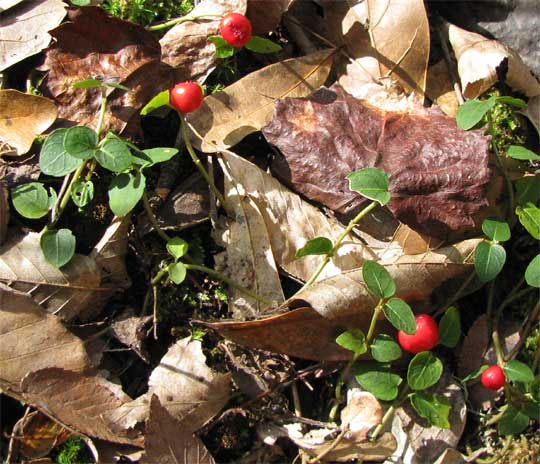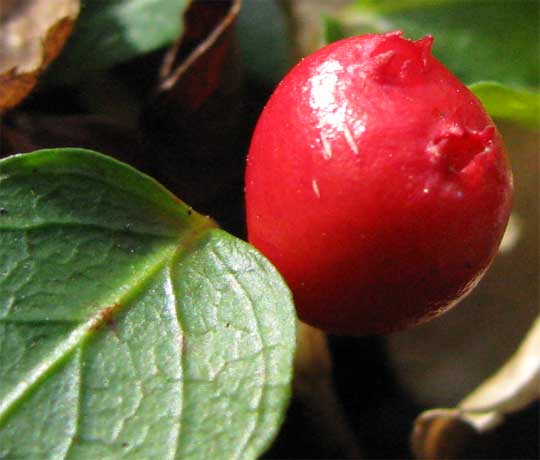Excerpts from Jim Conrad's
Naturalist Newsletter
from the the February 16, 2009 Newsletter issued from the woods of the Loess Hill Region a few miles from Natchez, Mississippi, USA
PARTRIDGE-BERRY FRUITING
On the bayou's steep, moss-covered walls the most eye-catching plant is certainly the little evergreen creeping herb called Partridge-Berry, MITCHELLA REPENS, which is conspicuous because of its brilliantly red, pea-sized fruits, shown below:

This little plant occurs throughout forested eastern North America and thrives on sheltered slopes such as our bayous' steep, lower walls. In this area Partridge-Berry occurs strictly "down in the bayous," the uplands between bayous being too dry and exposed.
Both taxonomically and anatomically Partridge-Berry is a bit surprising. It belongs to the mainly tropical Coffee or Madder Family, the Rubiaceae. In Mexico we've often noted this family's main field marks: opposite leaves (two at each stem node); flowers with inferior ovaries, and; conspicuous stipules connecting petiole bases.
Anatomically the interesting feature is that its flowers occur in pairs, but the two flowers' ovaries unite into one fruit. The close-up of a single fruit below shows two five-lobed calyxes topping it, with no visible hint of the fruit actually consisting of two fused ovaries.

The red berries are edible but they're so small and tasteless that not many people bother with them. One of the plant's many common names is Squaw Vine, and I wonder if that name reflects one of its several medicinal uses: "Partridge Berry is among the best remedies for preparing the uterus and whole body for child birth," I read on the Internet.